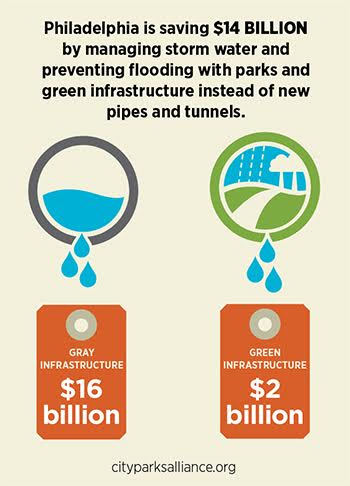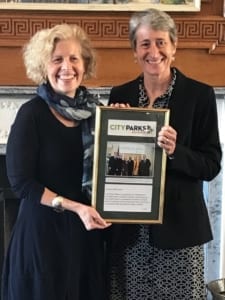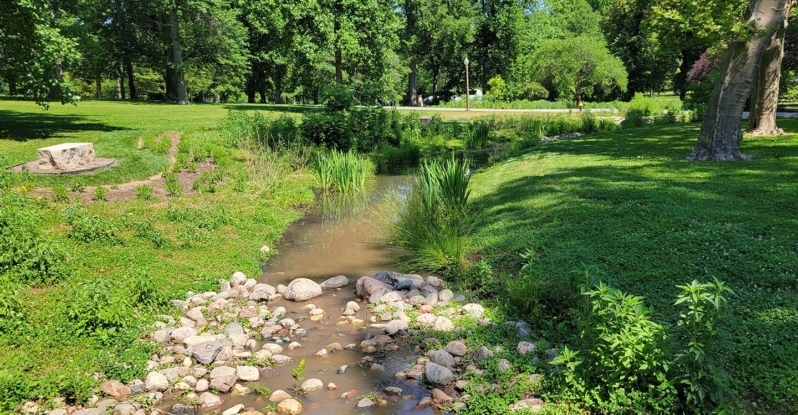For many Americans, access to the outdoors is not a long drive away but can be found close by in their neighborhood park. As more people are moving back to urban areas without the luxury of a backyard, the importance of close-to-home parks is only increasing. Parks are where people gather on weekends to spend time with family, exercise, and connect with their community. They are where children first experience nature. But beyond their role in recreation and social well-being, city parks also help grow local economies, create new transportation options, combat crime, and reduce environmental impacts such as stormwater runoff. Urban planners, elected officials, and community advocates recognize these benefits and are taking a fresh look at parks as an important part of city infrastructures.
 One of the critical funding sources for parks, playgrounds, urban wildlife refuges, greenways, trails, and open spaces in all 50 states is the Land and Water Conservation Fund (LWCF). LWCF is funded through revenue from offshore oil and gas drilling royalties. Those funds are leveraged with state and municipal funds—public and private—to provide close-to-home recreational opportunities and open space, which in turn benefit urban communities even more: attracting investment, creating jobs, spurring tourism, reducing public health expenditures, mitigating storm surges, and keeping the air and water cleaner. Permanent reauthorization and full funding of this important piece of legislation are critical for our nation’s future health and growth without tapping U.S. tax dollars.
One of the critical funding sources for parks, playgrounds, urban wildlife refuges, greenways, trails, and open spaces in all 50 states is the Land and Water Conservation Fund (LWCF). LWCF is funded through revenue from offshore oil and gas drilling royalties. Those funds are leveraged with state and municipal funds—public and private—to provide close-to-home recreational opportunities and open space, which in turn benefit urban communities even more: attracting investment, creating jobs, spurring tourism, reducing public health expenditures, mitigating storm surges, and keeping the air and water cleaner. Permanent reauthorization and full funding of this important piece of legislation are critical for our nation’s future health and growth without tapping U.S. tax dollars.
Philadelphia’s 10,334-acre park system, for example, was developed in part with $12 million in LWCF funds and is saving the city $6 million per year in stormwater management costs. As part of its Green City, Clean Waters initiative, over the next 25 years, Philadelphia will be investing $2 billion in parks and green infrastructure to capture 85% of the city’s stormwater, saving the city $16 billion that would otherwise be spent on underground pipes and tunnels. LWCF grants can match these water utility investments to ensure that stormwater management investments are simultaneously creating outdoor recreation opportunities.

Catherine Nagel presents award to Secretary Jewell
This week, I was able to thank Secretary of Interior Sally Jewell for her leadership in supporting urban parks around the country. She has been a strong advocate for permanent reauthorization and full funding of the LWCF and an active participant in many Mayors for Parks Coalition events.
Mayors for Parks, a project of City Parks Alliance, is a national bipartisan coalition of mayors who understand the importance of urban parks in their communities and are advocating for a strong LWCF. Secretary Jewell participated in events around the country with Mayors for Parks Coalition members Mayor Betsy Price of Fort Worth, TX, Mayor William Bell of Birmingham, AL, Mayor Jim Brainard of Carmel, IN, and Mayor Greg Stanton of Phoenix, AZ, to celebrate the 50th anniversary of the passage of LWCF. Secretary Jewell also joined me and fellow mayors in a press event for the release of City Parks Alliance’s report A Smart Investment for America’s Economy: The Land and Water Conservation Fund.
Urban parks are dynamic institutions that play a vital role in the social, economic, and physical well-being of America’s cities and their residents. Secretary Jewell understands the multiple benefits of urban parks and the critical role they play inspiring and offering youth, in particular, a chance to interact with nature. As development pressures on urban land continue to grow, we must find new and innovative ways to make sure that our parks have the funding they need and the benefits of green space are integrated into development decisions. For most Americans, the closest park will continue to be a city park.
 About the Author
About the Author
Catherine Nagel is the executive director of City Parks Alliance and has led the organization for fifteen years, growing the nonprofit organization from its inception to an internationally recognized learning and advocacy network. Read Catherine’s full bio here.

 About the Author
About the Author

